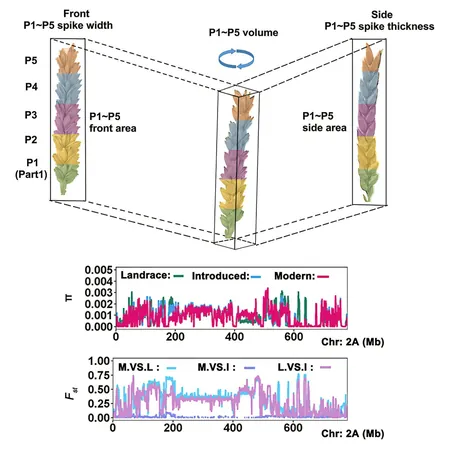
Unlocking Wheat's Potential: Revolutionary Research Reveals Genetic Secrets Behind Spike Morphology
2025-09-03
Author: Sophie
Groundbreaking Research on Wheat Spike Morphology
In a stunning breakthrough that could revolutionize wheat production, a team of researchers led by Lu Fei from the Institute of Genetics and Developmental Biology and Guo Zifeng from the Institute of Botany, both under the Chinese Academy of Sciences, has uncovered the genetic foundations shaping wheat spike morphology—an essential trait for maximizing yields.
The Importance of Spike Morphology in Yield Enhancement
Wheat spike morphology plays a vital role in determining both grain number per spike and grain weight—two key factors in overall yield. Unfortunately, traditional methods of manual measurements have fallen short, failing to capture the nuanced variations within different spike regions. This limitation has hampered scientists’ understanding of the underlying genetic mechanisms.
A Revolutionary High-Throughput Phenotyping Platform
To tackle these challenges, the research team developed a cutting-edge image-based high-throughput phenotyping platform that utilizes advanced 3D segmentation technology. This innovative tool enables precise measurements of various spike parameters such as length, width, thickness, area, and volume for the first time ever. By systematically quantifying an impressive 54 spike morphological traits, they have laid a robust foundation for genetic research on spike architecture.
Unlocking the Genetic Code Through Genome-Wide Studies
Employing genome-wide association studies (GWAS), the researchers uncovered a treasure trove of data, identifying 288 significant genomic regions across a global panel of 306 wheat varieties and 303 critical regions in 1,053 Chinese-bred cultivars. Fascinatingly, they discovered that geographical differences and selection trends influence spike morphology, with distinct haplotype combinations driving these variations.
Key Findings on Haplotype Impact and Breeding Progress
Among their findings, the team noted that haplotypes within the 2D chromosomal region—home to the TaDA1 and Rht8 genes—considerably affect spike length and width. Interestingly, the common negative correlation between spike length and width/thickness, observed in global landraces, has been mitigated through modern breeding techniques that select for complementary haplotypes.
A Century of Breeding: Increasing Spike Volume in China
A historical analysis of breeding practices in China over the last century revealed that while spike length has remained stable, strategic increases in spike width and thickness have resulted in a considerable rise in spike volume, significantly boosting potential yields.
Molecular Validation: A Leap in Wheat Breeding Efficiency
In a noteworthy discovery, haplotypes responsible for controlling spike volume in various spatial sections showed a marked increase during modern breeding efforts. For example, the frequency of the beneficial haplotype C-trait51-5B.2 skyrocketed from 12.6% to an astounding 61.14%. Furthermore, molecular validation confirmed that the advantageous haplotype TraesCS1D02G068300 can ramp up spike volume by an impressive 53.23%.
These findings not only shed light on the genetic intricacies of wheat but also present exciting prospects for precision breeding aimed at enhancing yields to meet the ever-growing global demand for food.









 Brasil (PT)
Brasil (PT)
 Canada (EN)
Canada (EN)
 Chile (ES)
Chile (ES)
 Česko (CS)
Česko (CS)
 대한민국 (KO)
대한민국 (KO)
 España (ES)
España (ES)
 France (FR)
France (FR)
 Hong Kong (EN)
Hong Kong (EN)
 Italia (IT)
Italia (IT)
 日本 (JA)
日本 (JA)
 Magyarország (HU)
Magyarország (HU)
 Norge (NO)
Norge (NO)
 Polska (PL)
Polska (PL)
 Schweiz (DE)
Schweiz (DE)
 Singapore (EN)
Singapore (EN)
 Sverige (SV)
Sverige (SV)
 Suomi (FI)
Suomi (FI)
 Türkiye (TR)
Türkiye (TR)
 الإمارات العربية المتحدة (AR)
الإمارات العربية المتحدة (AR)